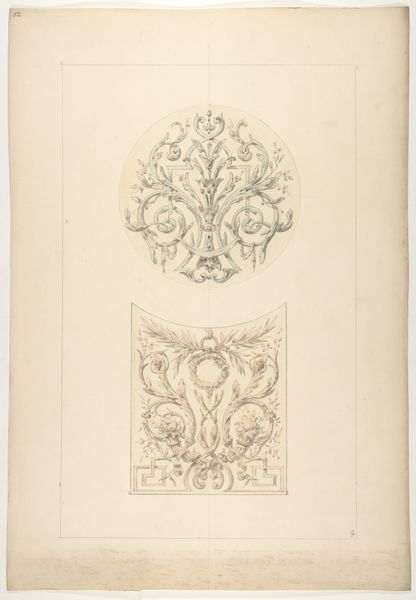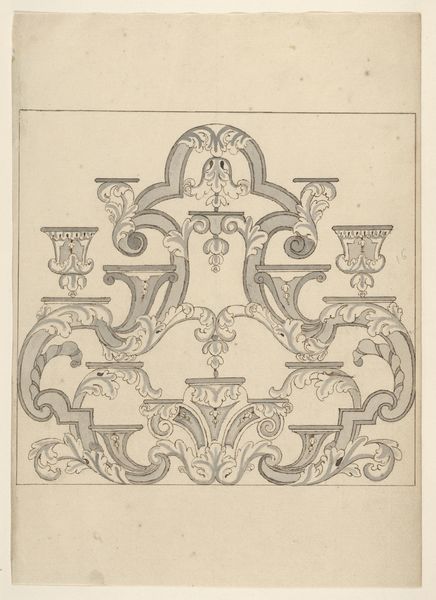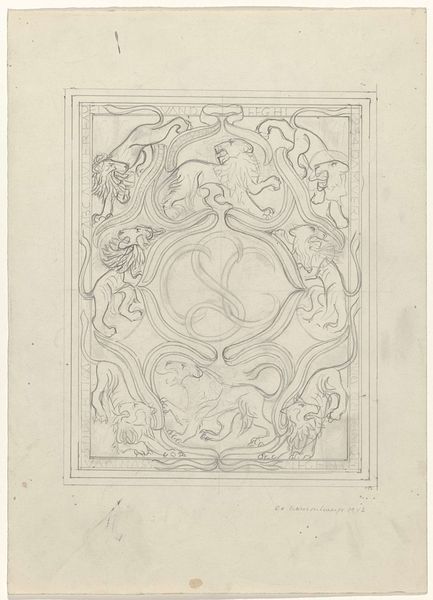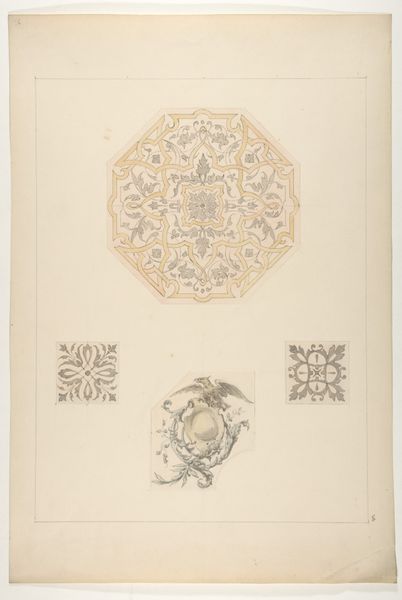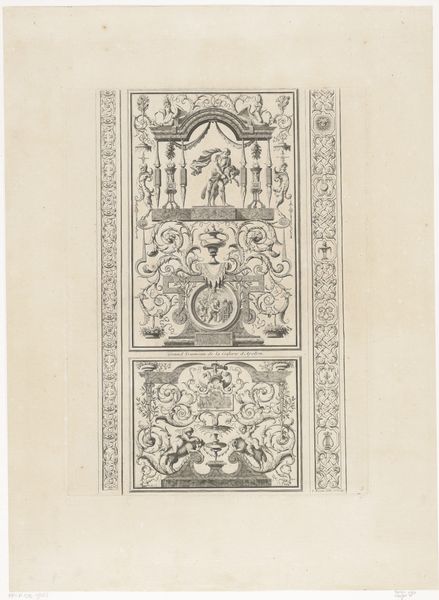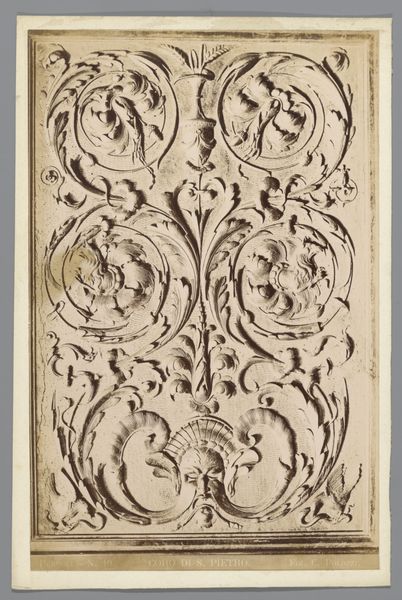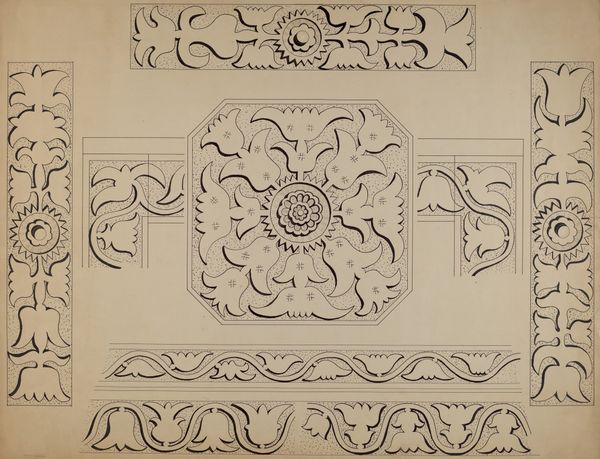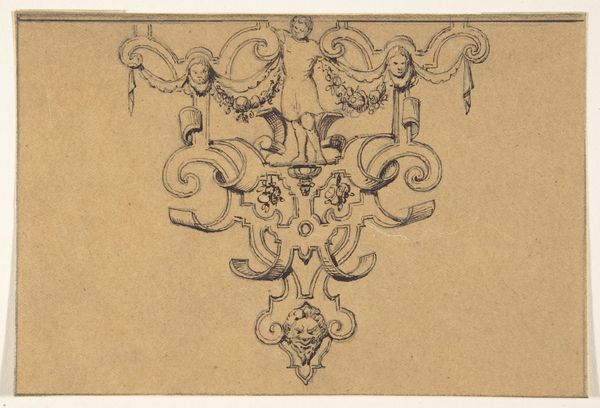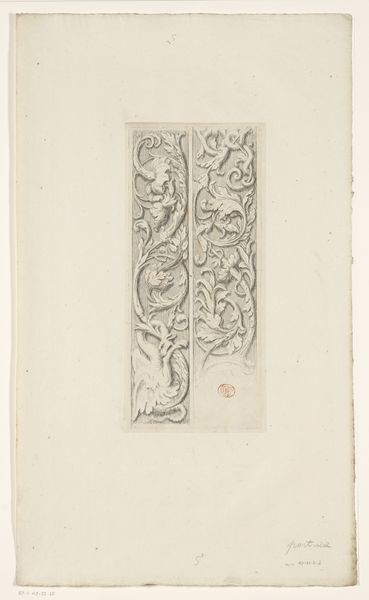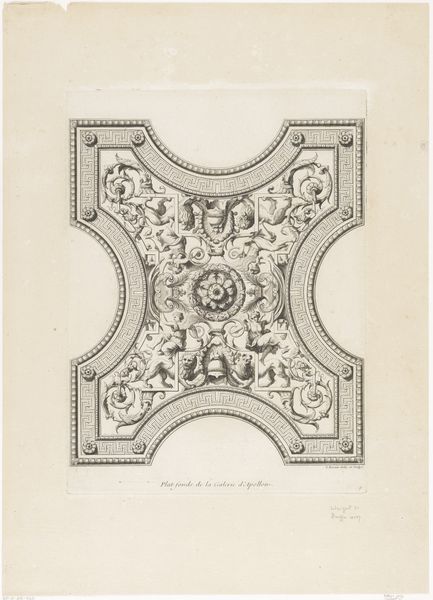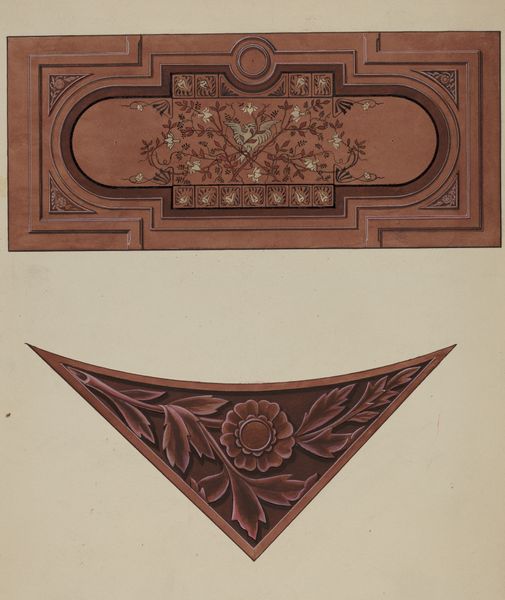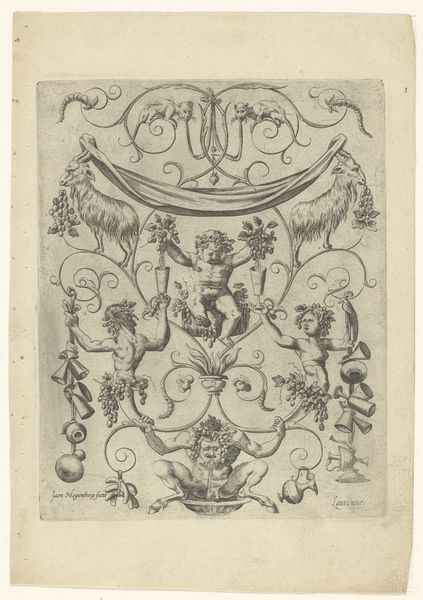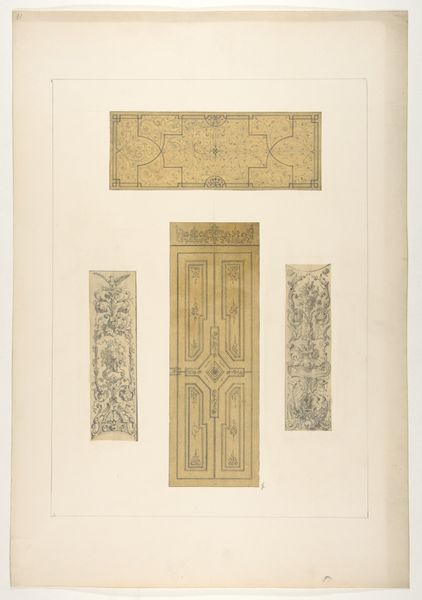
Grotesque designs featuring griffin, birds, and dolphins 1830 - 1897
0:00
0:00
drawing, coloured-pencil, print, ink
#
drawing
#
coloured-pencil
#
animal
# print
#
fantasy-art
#
ink
#
coloured pencil
#
geometric
Dimensions: Overall: 19 7/16 x 12 15/16 in. (49.4 x 32.8 cm)
Copyright: Public Domain
Curator: This drawing, crafted sometime between 1830 and 1897, presents a series of grotesque designs attributed to Jules-Edmond-Charles Lachaise. The materials seem to be a combination of ink and colored pencil on paper. Editor: Immediately, I am struck by how this piece manages to be both whimsical and slightly unsettling. The creatures are stylized, of course, but their watchful eyes give a palpable sense of disquiet. Curator: Yes, consider the organization of these elements. The composition relies heavily on symmetry and repetition. Observe how the four quadrants, defined by their ornate, curving borders, enclose the varied creatures—griffins, birds, and dolphins—while also creating a balance and harmony throughout the plane. Editor: Beyond the structure, I can't help but see these creatures as symbols. The griffin, a fusion of lion and eagle, historically represents strength and vigilance, and the dolphins speak to notions of swiftness and salvation, while birds can stand for freedom or foreboding depending on cultural context. Placed together in this way, the image suggests a complex, perhaps even contradictory set of virtues and omens. Curator: I'm most captivated by the artist's skill in delineating form and texture with relatively simple means. Note the delicate shading, which subtly gives depth to each motif while retaining a graphic, almost architectural quality. The linear precision serves not merely to depict but to stylize. Editor: I agree, but to add to that the symbolic language being presented here resonates across millennia. Grotesques like this served as visual reminders of the chaos beyond order, a tangible way to confront hidden aspects of ourselves. Its impact persists through the ages. Curator: Certainly, the formal aspects amplify that impression, as we view it now with centuries of design intervening. The structural framework supports these powerful interpretations. Editor: Indeed, and it gives a more enriched experience by allowing us to tap into deep-rooted, cultural associations. Curator: Quite so. It is always fascinating how a composition will support many types of observation from iconography, like yourself, or formalism like myself.
Comments
No comments
Be the first to comment and join the conversation on the ultimate creative platform.
